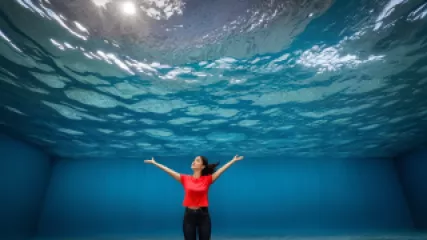How Does the Psychology of Space Influence Behavior?
How Does the Psychology of Space Influence Behavior?
The spaces we inhabit have a profound impact on our thoughts, emotions, and behaviors. From the layout of our homes to the design of our workplaces, the psychology of space plays a crucial role in shaping our experiences and wellbeing. In this article, we'll explore the fascinating ways in which the psychology of space can influence our actions, perceptions, and overall quality of life.
The Importance of Spatial Awareness
Spatial awareness, or our ability to understand and navigate the physical world around us, is a fundamental aspect of human cognition. This awareness is shaped by the various cues and information we receive from our environments, including the size, shape, and arrangement of the spaces we occupy.
Winford Campbell, a renowned environmental psychologist, explains that "our spatial awareness is not just a passive process of perceiving our surroundings; it's an active process of interpreting and making sense of the physical world. The way we organize and interact with the spaces we inhabit can have a significant impact on our thoughts, emotions, and behaviors."
The Influence of Spatial Design on Mood and Emotions
One of the most well-documented aspects of the psychology of space is its influence on our mood and emotions. The design of a space, from its lighting and color scheme to its layout and furnishings, can profoundly impact how we feel within it.
For example, studies have shown that open, airy spaces with abundant natural light tend to promote feelings of calmness and well-being, while cramped, dimly lit spaces can contribute to feelings of anxiety and stress. Juliette Murphy, an interior designer specializing in mental wellness, explains that "the way we design our living and working spaces can either enhance or hinder our emotional state. By considering the psychological impact of spatial elements, we can create environments that support our mental health and overall quality of life."
The Relationship Between Space and Productivity
The psychology of space also plays a crucial role in our productivity and cognitive performance. The way a workspace is designed can have a significant impact on our ability to focus, collaborate, and generate new ideas.
Lorenzo Stewart, a workplace design consultant, notes that "open floor plans, for example, can foster a sense of community and collaboration, but they can also be overstimulating and distracting for individuals who need more privacy or quiet to concentrate. By understanding the needs and preferences of the people using a space, we can design environments that optimize for both individual and team-based work."
The Influence of Space on Behavior and Social Interaction
The psychology of space also shapes our social behaviors and interactions. The way a space is designed can either encourage or discourage certain types of social interaction, affecting the way we communicate, collaborate, and connect with others.
Lea Anderson, a social psychologist, explains that "the spatial arrangement of a room, such as the placement of furniture or the flow of traffic, can either promote or hinder social engagement. Well-designed spaces that encourage face-to-face interaction and allow for easy movement and conversation can foster a sense of community and connection, while spaces that feel cramped or isolated can inhibit social interaction and lead to feelings of isolation."
The Therapeutic Potential of Spatial Design
In recent years, the field of environmental psychology has explored the therapeutic potential of spatial design, particularly in the context of mental health and wellbeing. Winford Campbell notes that "the design of our living and working spaces can have a profound impact on our mental health, either supporting or hindering our ability to heal and thrive."
For example, studies have shown that well-designed healthcare environments, such as those with natural elements, soothing colors, and ample natural light, can help reduce patient stress and anxiety, improve sleep quality, and promote faster recovery times. Similarly, the design of mental health facilities, such as counseling centers and therapy rooms, can significantly impact the therapeutic experience and the efficacy of treatment.
Principles of Healing Environment Design
Juliette Murphy, a leading expert in healing environment design, outlines several key principles that can inform the creation of spaces that support mental wellness and healing:
- Sensory Stimulation: Designing spaces that engage the senses, such as incorporating natural elements, calming colors, and soothing sounds, can help reduce stress and promote relaxation.
- Spatial Flexibility: Allowing for adaptable and personalized spaces that can be tailored to individual needs and preferences can enhance a sense of control and comfort.
- Biophilic Design: Incorporating elements of nature, such as plants, water features, and natural light, can foster a sense of connection to the natural world and promote wellbeing.
- Emotional Resonance: Designing spaces that evoke positive emotional responses, such as a sense of safety, calm, or inspiration, can support the therapeutic process and facilitate personal growth.
- Social Connectivity: Creating spaces that encourage social interaction and a sense of community can help alleviate feelings of isolation and foster a supportive environment.
The Future of the Psychology of Space
As our understanding of the psychology of space continues to evolve, the potential for designing environments that support human health, wellbeing, and performance becomes increasingly apparent. Lea Anderson anticipates that "the field of environmental psychology will play an increasingly important role in shaping the way we design our living and working spaces, with a focus on creating environments that not only look aesthetically pleasing but also actively support our cognitive, emotional, and social needs."
Lorenzo Stewart adds that "the integration of technology and data-driven design will also likely play a significant role in the future of the psychology of space. By leveraging tools like predictive analytics and virtual reality, we can gain deeper insights into how people interact with and respond to their environments, allowing us to create even more tailored and impactful spatial experiences."
Ultimately, the psychology of space is a powerful and multifaceted field that offers valuable insights into the human experience. By understanding how the design of our environments can influence our thoughts, emotions, and behaviors, we can create spaces that not only look aesthetically pleasing but also actively support our overall wellbeing and quality of life.
In conclusion, the psychology of space is a complex and fascinating field that explores the profound impact our physical environments can have on our thoughts, emotions, and behaviors. From the way we organize our living and working spaces to the design of therapeutic environments, the spatial cues and information we receive from our surroundings can shape our experiences in profound ways.
As we continue to deepen our understanding of the psychology of space, the potential for designing environments that support human health, wellbeing, and performance becomes increasingly apparent. By incorporating principles of sensory stimulation, spatial flexibility, biophilic design, emotional resonance, and social connectivity, we can create spaces that not only look aesthetically pleasing but also actively nurture our cognitive, emotional, and social needs.
Moreover, the integration of technology and data-driven design is likely to play a significant role in the future of the psychology of space, allowing us to gain deeper insights into how people interact with and respond to their environments. This, in turn, will enable us to create even more tailored and impactful spatial experiences that enhance our overall quality of life.
Overall, the psychology of space is a testament to the profound ways in which our physical environments can shape our lived experiences. By understanding and applying these insights, we can create spaces that not only support our basic needs but also nourish our minds, bodies, and spirits, ultimately leading to a more fulfilling and enriched human experience.






